Intel 3D XPoint Optane SSD DC P4800X Performance Preview
OLTP, File & Email Server Workloads
To read more on our test methodology visit How We Test Enterprise SSDs, which explains how to interpret our charts. The most crucial step to assuring accurate and repeatable measurements starts with a solid preconditioning methodology, which is covered on page three. We cover workload performance measurements on page six, explain latency metrics on page seven, and introduce QoS testing and the QoS domino effect on page nine.
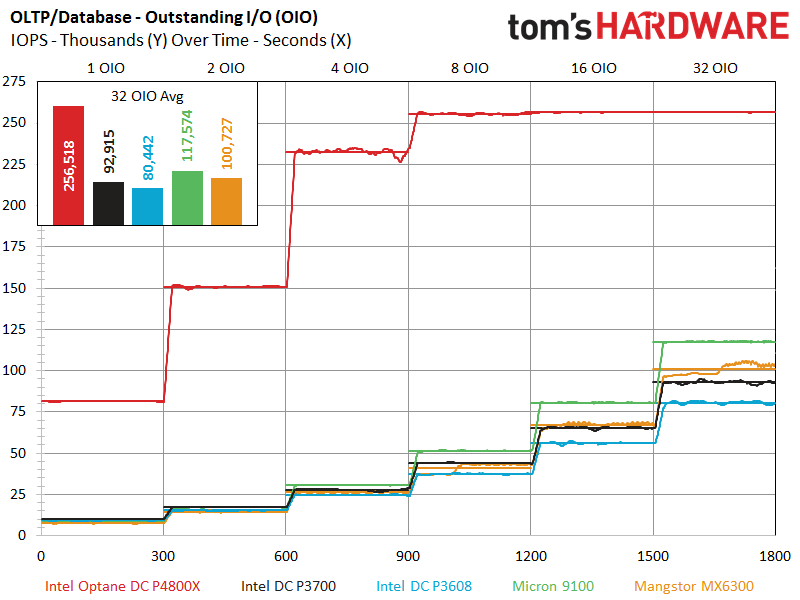
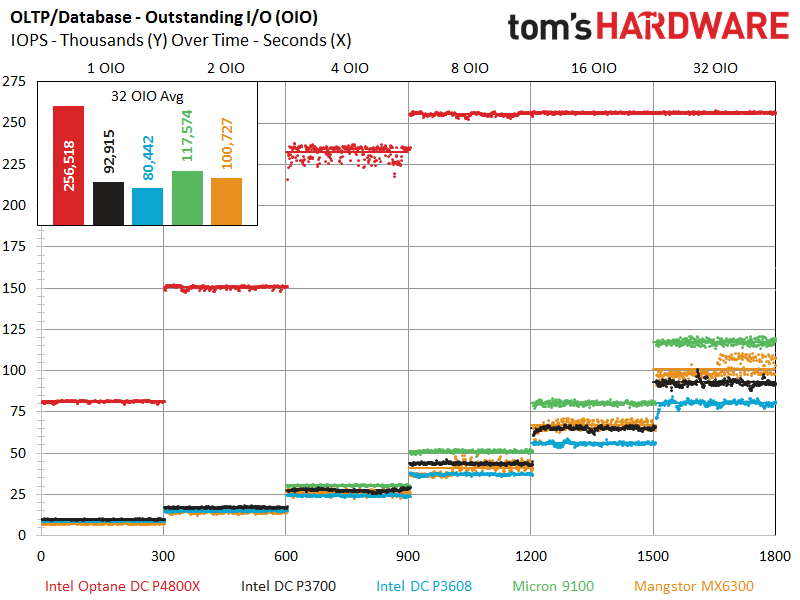
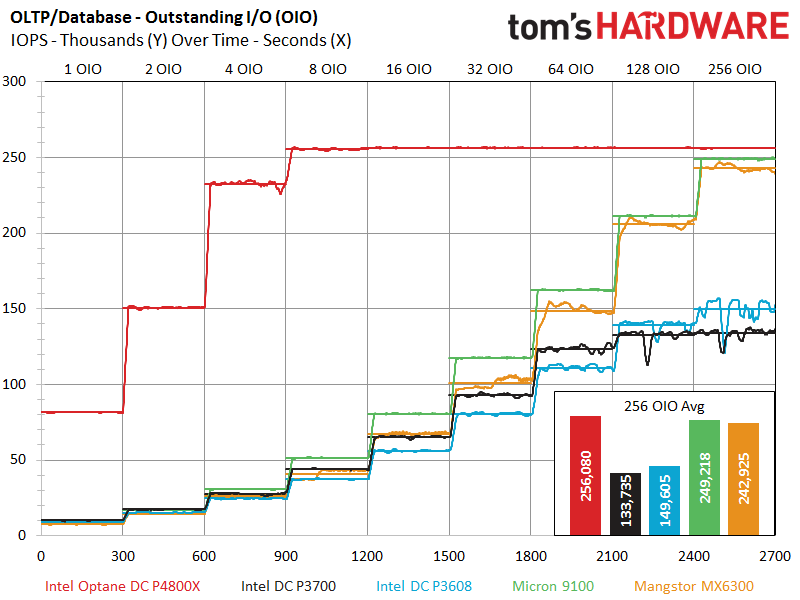
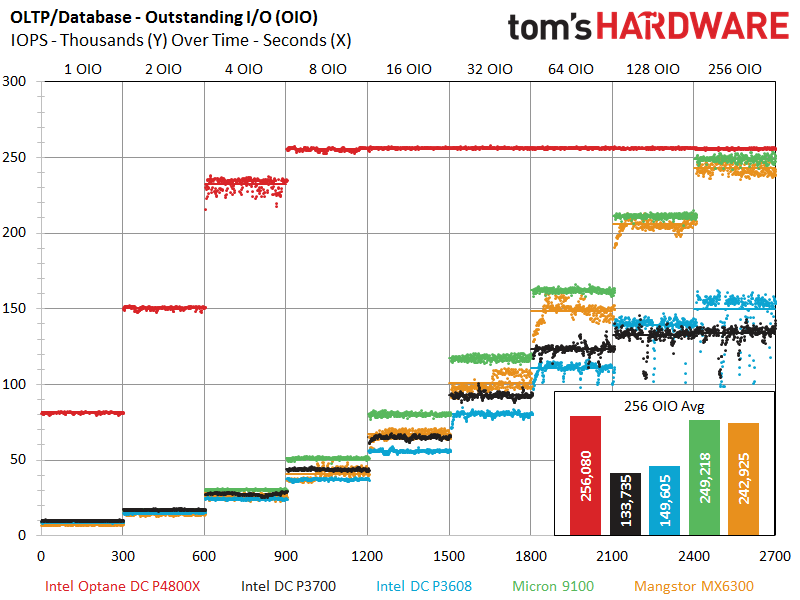

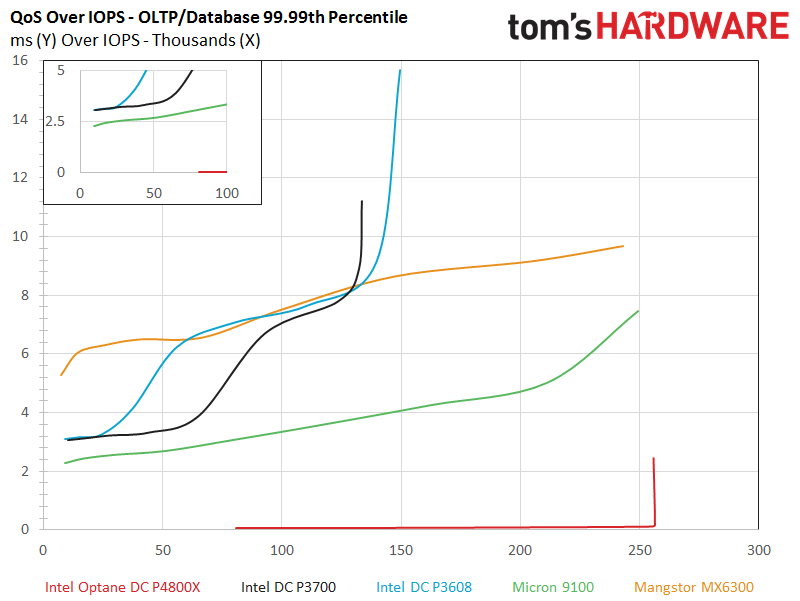

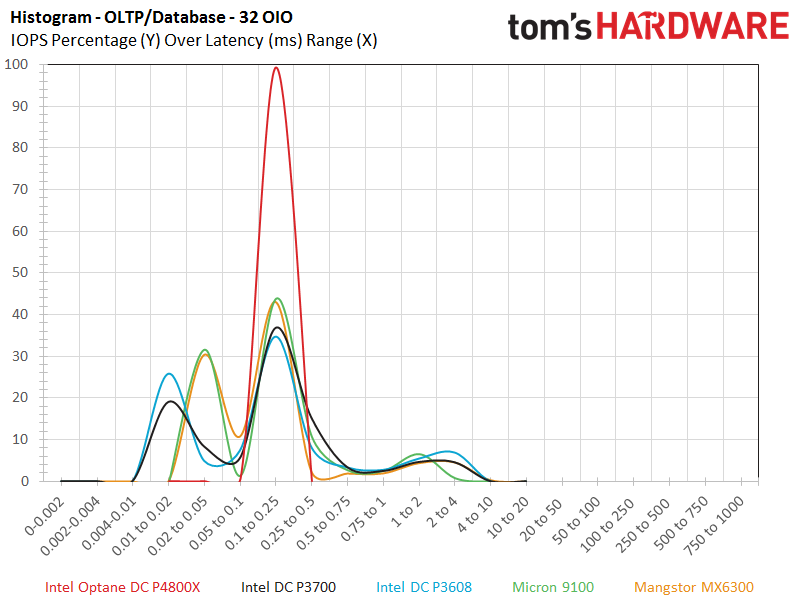
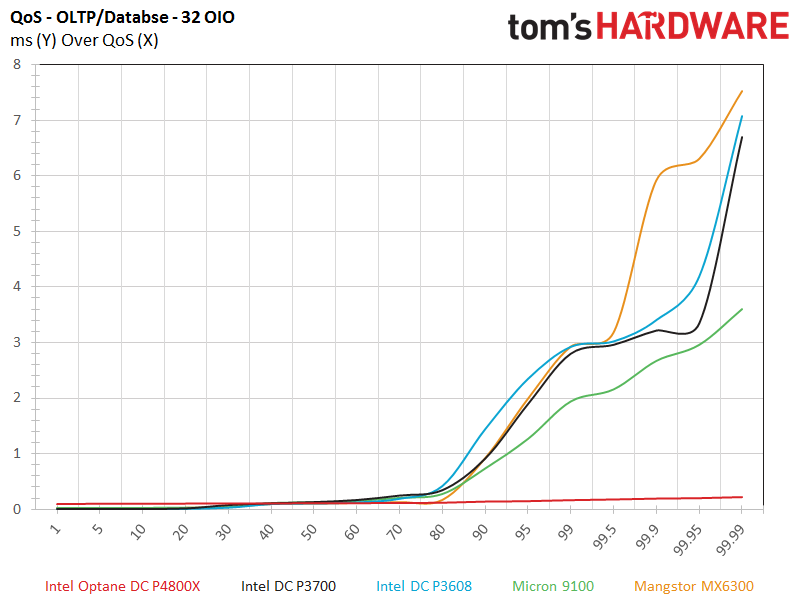
Intel designed the DC P4800X for transactional environments, and that shines through in our OLTP/database tests. The DC P4800X simply dominates every portion of the metric, from delivering 80,000 IOPS at one OIO up to a blistering 256K at 256 OIO. Again, database admins focus on the light end of the scale, so one to four OIO is the most critical measurement, and it’s simply impossible to ignore that the DC P4800X offers up to nine times as much performance under a similar load. We’re looking at a tangible advantage that far outstrips Intel's price point.
Also, most of the SSDs in our test pool suffer increased variability under heavy loads, while the DC P4800X is unfazed. The DC P4800X scores a commanding win in the full breadth of latency, QoS, and standard deviation metrics. The small sub-chart on the QoS-over-IOPS chart tells the entire story. Under light loads, the DC P4800X barely even registers on the latency scale, and that extends across our workload.
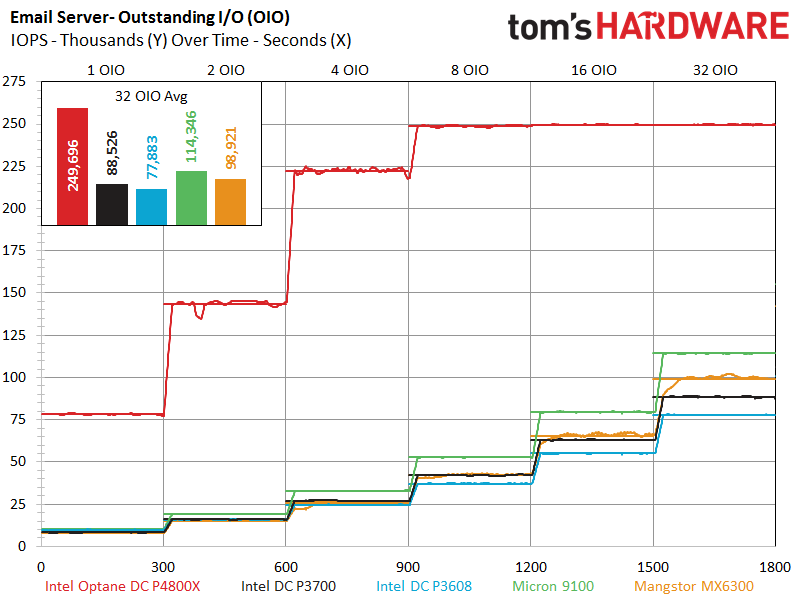
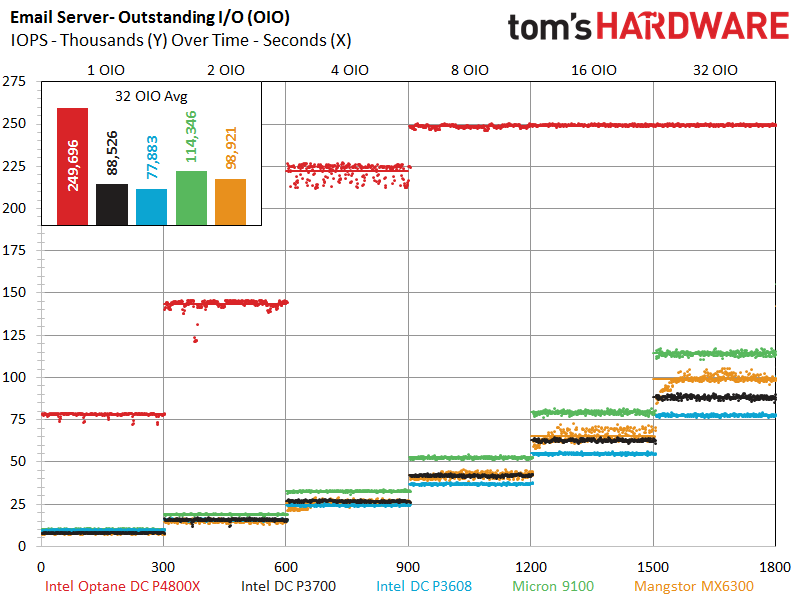

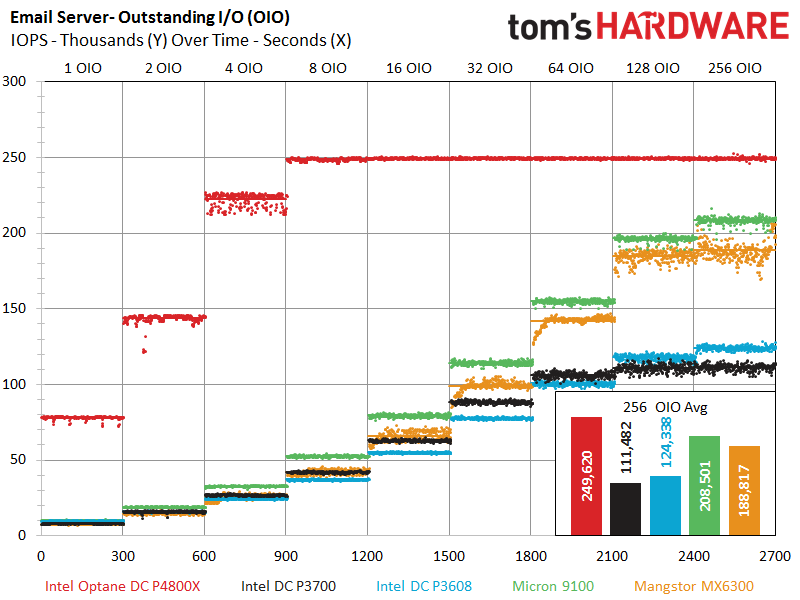
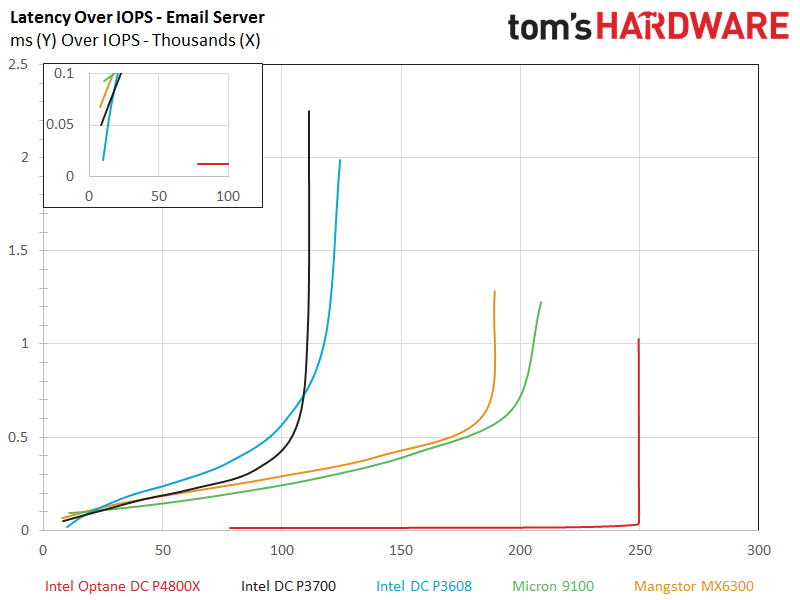
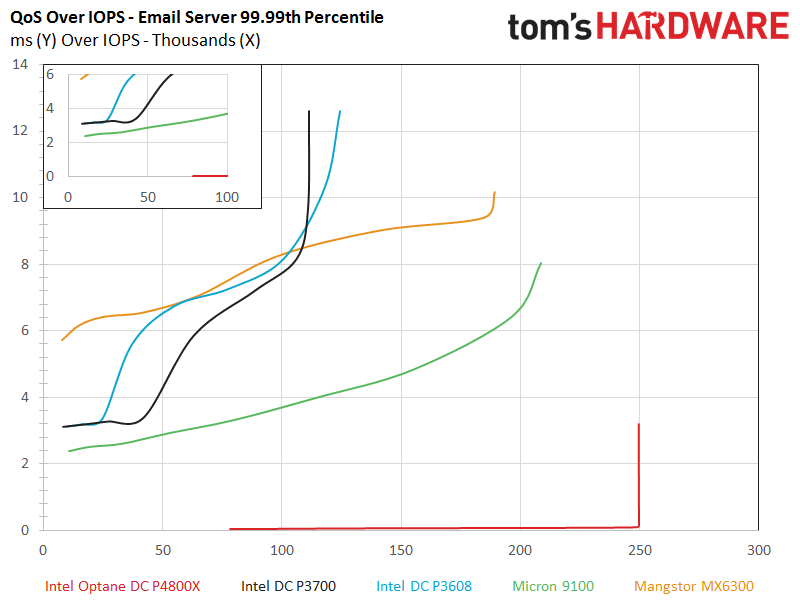
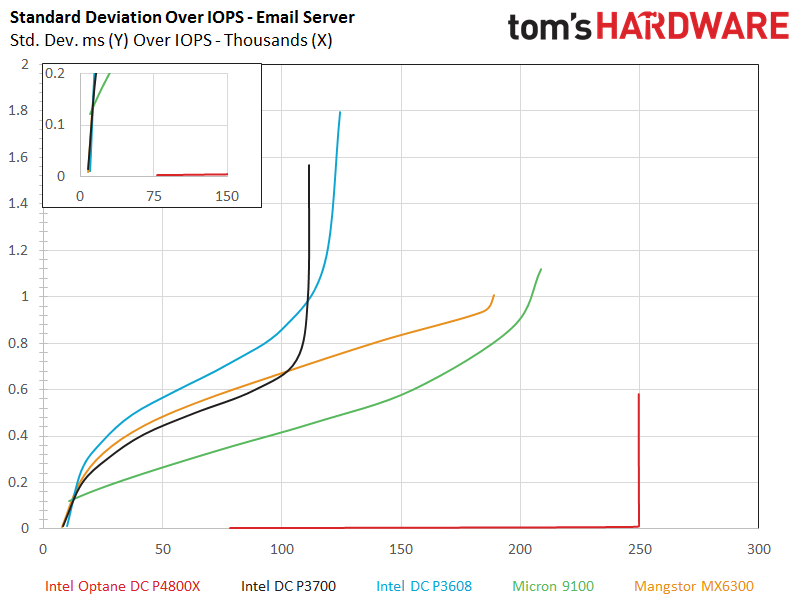
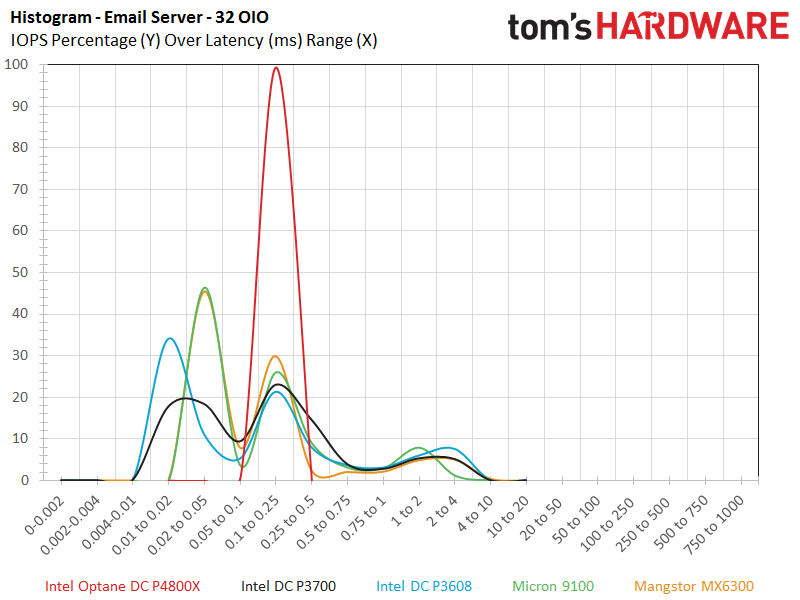

The email server workload represents a heavier distribution of write commands. The test is more demanding, but that matters little to the DC P4800X. It powers through in the same convincing fashion we observed during the OLTP test.


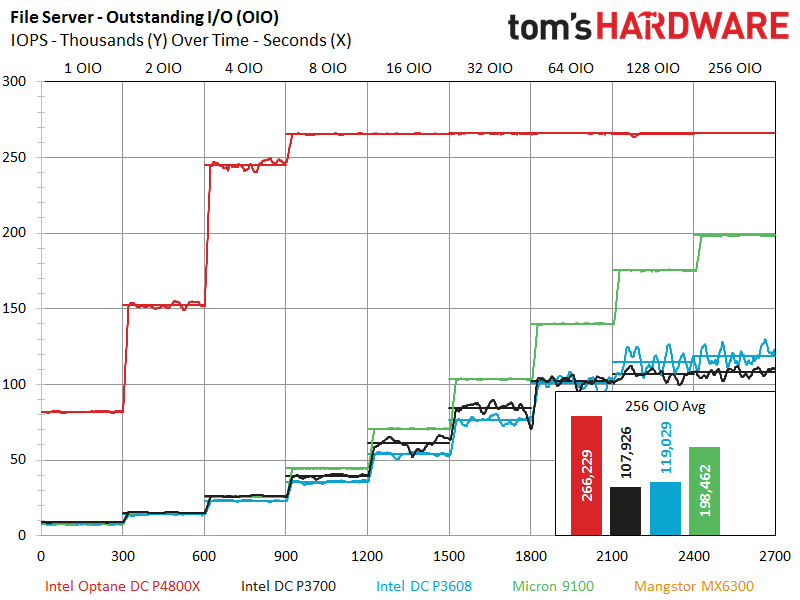
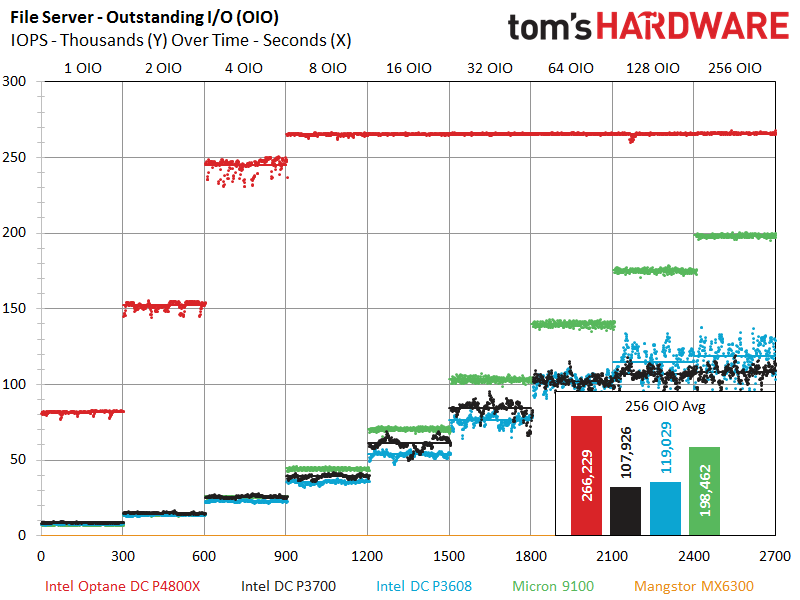
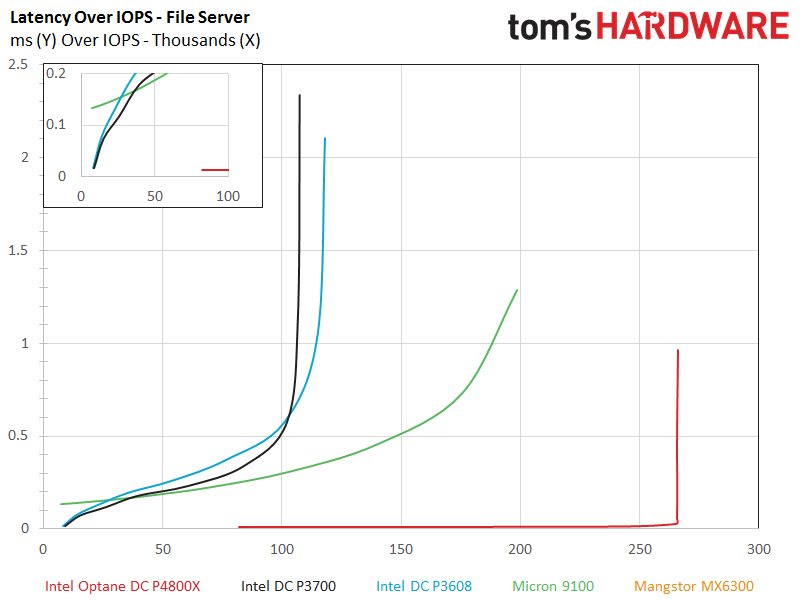
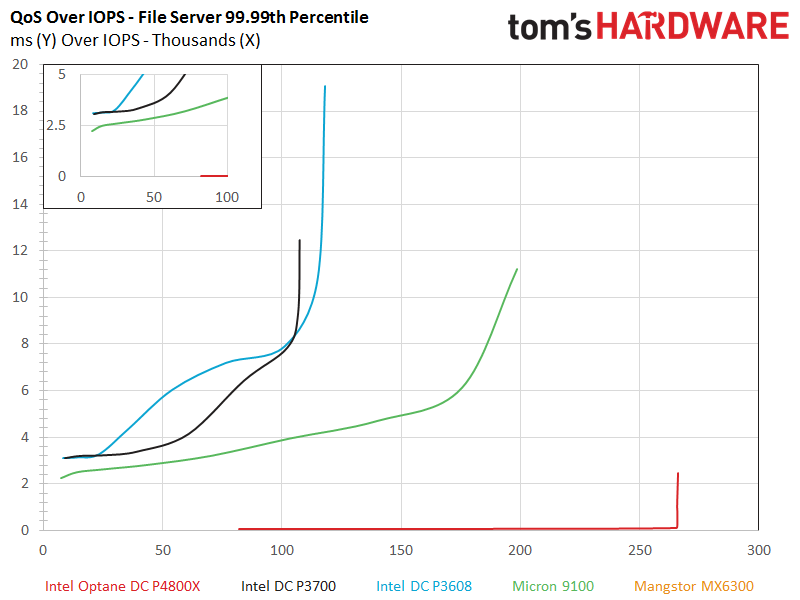
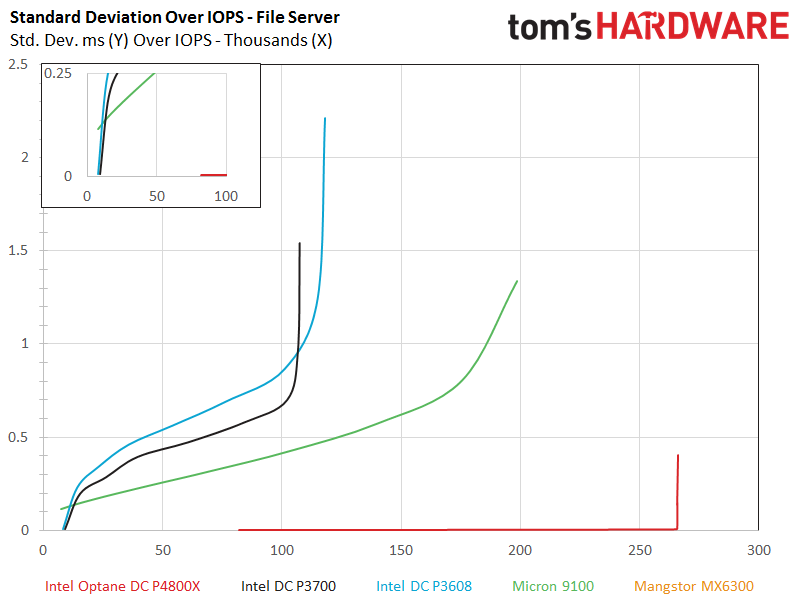

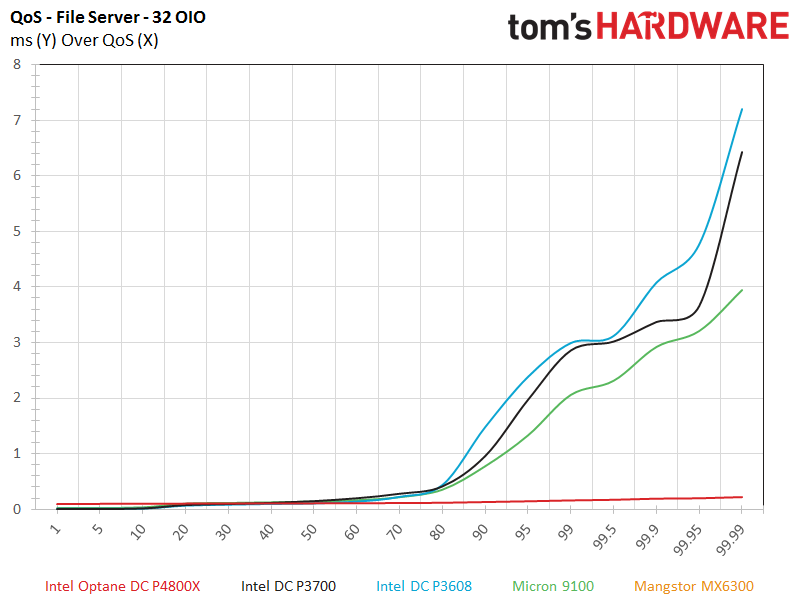
We cling to the file server workload because it contains a healthy distribution of small 512B access that are very demanding for NAND-based SSDs. The tiny chunks of data are enough to choke the most robust drives out there, so it serves as a good torture test that’s also indicative of performance in demanding environments. The Mangstor MX6300 disappears from this chart due to its 4Kn format (it simply can’t process 512B files).
Intel's DC P4800X shrugs it off, though, and delivers what we’ve come to expect: the best of everything. There's just one caveat, though. We’ve noticed that in most of our random workloads on this page, the drive experiences some variability at four OIO. We didn’t have enough time to dive in and diagnose the issue entirely, but considering the stellar latency, QoS, and standard deviation metrics, it’s possible the problem resides in software.
MORE: Best Enterprise SSDs
Get Tom's Hardware's best news and in-depth reviews, straight to your inbox.
Current page: OLTP, File & Email Server Workloads
Prev Page 128K Sequential Read & Write Next Page Final Analysis
Paul Alcorn is the Editor-in-Chief for Tom's Hardware US. He also writes news and reviews on CPUs, storage, and enterprise hardware.
-
Geekwad A true signal that raw processing power is played out.Reply
Storage of all kinds and an increased focus on parallelism in software implementations is more exciting. -
anbello262 I can't wait to have the consumer version. I can cleary see in a few years ssd replacing hdd for storage, and xpoint replacing ssd for OS/boot/programs.Reply -
shrapnel_indie Call me when the testing is completed with real hardware on hand. Its too easy to simulate in a virtual environment. (Not saying they did, but the potential exists.) The numbers are nice though.Reply